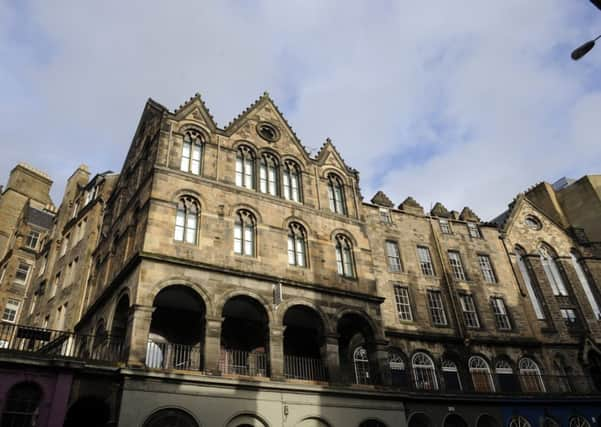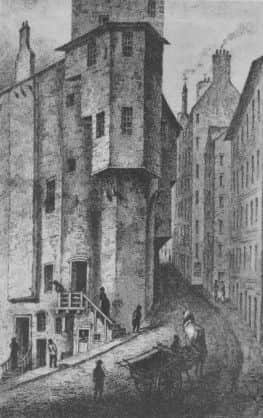Lost Edinburgh: The Wizard of West Bow


A respectable figure
Lanarkshire-born Weir moved to Edinburgh in the early 1600s where he became commander of the Town Guard following an impressive military career as a covenanting soldier. Once in retirement, he remained in Scotland’s capital and continued to cut a prominent figure around town.
Weir was a devout, vocal Presbyterian and widely respected as such. He shared a property on the West Bow with his sister, Jean and hosted many a private meeting.
Advertisement
Hide AdAdvertisement
Hide Ad

To outsiders, it seemed that Weir had led a virtuous, yet unremarkable, life. However, this view began to erode somewhat as Weir approached his seventieth birthday.
Revelations
The true nature of Weir’s existence came to light in 1670 when the elderly Major confessed his long list of sins to an astonished congregation. Completely out of the blue, Weir admitted to decades of abhorrent behaviour and sexual depravity, which included incestuous relations with his sister and step-daughter, various other acts of fornication and adultery, and even bestiality with horses and cows.
Major Weir’s sister Jean readily confirmed the shocking revelations and went even further to explain that the illicit sexual relations with her brother, which had been going on since she was just 10 years old, had ceased only recently due to the waning of the Major’s physical attraction for her.
To make matters worse, Jean added further gravity to the situation by claiming that, many years ago, the Weirs had made a pact with the Devil and were guilty of countless acts of Satanism, sorcery and witchcraft. The immediate future for the Weirs looked bleak to say the least.
Advertisement
Hide AdAdvertisement
Hide AdWord of the Weirs’ lurid crimes soon reached the ears of the city authorities who were quick to incarcerate the pair in the Tolbooth while they awaited execution.
Executions
The Weirs were tried on 9 April 1670. Major Thomas fully accepted his grim fate and refused to beg God for forgiveness as he declared ‘Let me alone, I have lived as a beast and I shall die as a beast’. Weir was garotted and burned at the Gallow Lea close to modern-day Shrubhill.
Jane Weir was sentenced to be hanged at the Grassmarket. She was noticeably less gracious upon departure than her brother, wishing to die with all the shame she could muster.
Intent on creating a scene, she stripped herself naked while shrieking obscenities at the large crowd. The hangman eventually stepped forward to cut the performance short, kicking Weir from her perch.
Ghost stories
Advertisement
Hide AdAdvertisement
Hide AdFor some time after the executions, the Weirs’ old house on the West Bow was considered off-limits. Nobody in Edinburgh dared step foot in the property for fear that it may be haunted or cursed. Even in the early 19th century, Sir Walter Scott maintained that the house possessed ‘a gloomy aspect well-suited to a necromancer’, and Robert Louis Stevenson admitted to suffering from nightmares in his childhood as a result of hearing the tale of Major Weir – who was now commonly referred to as ‘the Wizard of the Bow’.
The sordid details of the Weirs’ clandestine affairs, and flirtations with witchery and Satanic worship, had created a long-lasting legacy. Alleged ghost sightings of Major Weir were a regular occurrence in the area.
Recent discoveries
All remains of Major Weir’s home were thought to be lost following construction work at the head of the West Bow in the 1860s. However, recent discoveries by Cardiff University historian Dr Jan Bondeson suggest that it was actually incorporated into what is currently the Quaker Meeting House on Victoria Terrace. The Italian Gothic chapel was built in 1865 and was originally known as Kirk House.
It is thought that the discovery will place the building firmly on the tourist trail as it becomes the latest contender for the city’s most haunted location.